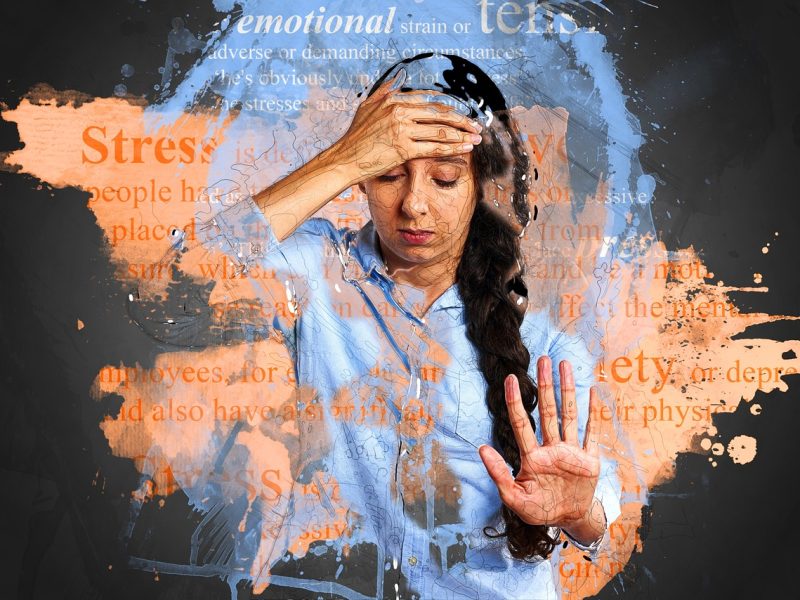The World Health Organization (WHO) defines mental health problems as “a state of well-being that enables everyone to recognize their capacities, to achieve fulfillment, to overcome the normal stresses of life, to perform productive work and fruitful and to contribute to the life of its community”. According to this definition, being in good mental health is therefore not just about not having an illness.
Mental illness is defined by changes that affect the thinking, mood or behavior of a person and cause him distress or suffering. Mental illness manifests itself by:
· signs of change, which those around you can observe in the behavior of the affected person;
· Symptoms, which the person feels.
For example, relatives of an affected person may notice that they are isolating themselves. The affected person, on the other hand, may have difficulty concentrating, or feel sad or anxious.
The health care professional or doctor considers all the signs and symptoms to assess the person’s condition and make a diagnosis.
Types of mental health Disorders
- Anxiety disorders
- Generalized anxiety
- Psychotic disorders
- Phobia
- Panic disorder and agoraphobia
- Post-traumatic stress disorder (PTSD)
Anxiety disorders
Anxiety disorders are a group of psychological problems more commonly encountered in women than in men, the symptoms of which include excessive anxiety and panic attacks, feelings of fear, worry, and avoidance and compulsive behaviors.
How to deal with anxiety attacks
Most people use vitamins for anxiety and panic attacks and they avoid some foods that cause anxiety and panic attacks. Some people use natural herbs for anxiety and panic attacks.
Anxiety disorders include several other disorders:
- panic attacks
- obsessive-compulsive disorder
- Bipolar disorder
- social phobia
- generalized anxiety disorder
- specific phobia (simple phobias)
- Post-traumatic stress disorder (fear following a traumatic event).
Generalized anxiety
It is perfectly normal to feel a little anxious on certain occasions. On the other hand, a person can present with generalized anxiety if they experience any of the following situations:
- She feels too much anxiety about the importance of the events in question, that is, her worries are excessive and difficult to control. For example, a person might fear that their children will have a traffic accident every time they go to school.
- She feels a lot of anxiety because of her professional, financial and family responsibilities, without being able to detach from them to relax for a moment.
Generalized anxiety has a big impact on how a person functions in their day-to-day life. It affects their relationships and family, social and work activities.
Generalized anxiety is part of the large family of anxiety disorders
Psychotic disorders
Psychotic disorders are characterized by the presence of psychotic symptoms based on their definition (unlike other disorders, such as depression, these symptoms may be present but are not essential to the diagnosis).
Phobia mental health problems
The phobia is part of the large family of anxiety disorders. Its main form is specific phobia. It affects around 9% of the population.
Specific phobia
Specific phobia is a fear associated with a particular object or situation, such as traveling by plane. The person feels an excessive and unreasonable fear in the face of a situation that does not represent a real danger.
Personality disorders
Personality disorders are mental health problems that cause you to think, feel, and behave differently than most people. When untreated, they can cause distress or problems in the lives of people who have them.
One very common personality disorder is called borderline personality disorder (BPD). It’s characterized by:
- self-image issues
- difficulty managing emotions and behavior
- unstable relationships
One key behavior shared by many with BPD is known as “splitting countertransference,” or simply “splitting.”
Keep reading to learn more about splitting in borderline personality disorder BPD and how to cope with it.
Panic disorder and agoraphobia
Agoraphobia sometimes accompanies panic disorder. The person with agoraphobia fears public places, often because they are afraid that they will not be able to get out easily or have a seizure. For example, a person with agoraphobia may be unable to go grocery shopping or go to a concert.
When agoraphobia occurs, its symptoms usually appear within a year of the onset of panic attacks.
Post-traumatic stress disorder
For people with post-traumatic stress disorder, these reactions do not go away completely. The person continues to relive them with the same intensity as the first time, in the form of dreams or flashbacks. The flashbacks are mental images that bring the traumatic situation to the person. The person may also relive these reactions when exposed to a situation similar to the one that caused the trauma.
The affected person can then try to avoid situations or conditions that remind them of the trauma. The need to avoid any threatening situation can have serious consequences on personal, family and social activities.
Conclusion
Mental health problems can cause disturbances in daily tasks, working, connections, relationships, school, and other significant spaces. With fitting determination and treatment, be that as it may, individuals can track down help from their indications and find ways of adapting viably. There is a huge list of mental disorders that can not cover in one article, we will discuss more mental disorders in next post like Schizophrenia, Intellectual Disability, Autism Spectrum Disorder, Mania, Agoraphobia, Acute Stress Disorder, Self-esteem, Self-harm, Postnatal depression & perinatal mental health
Also Read:
What are the impact of popularity on mental health?
Mental Health Treatment Program Illinois
Mental Illness Recovery Center


